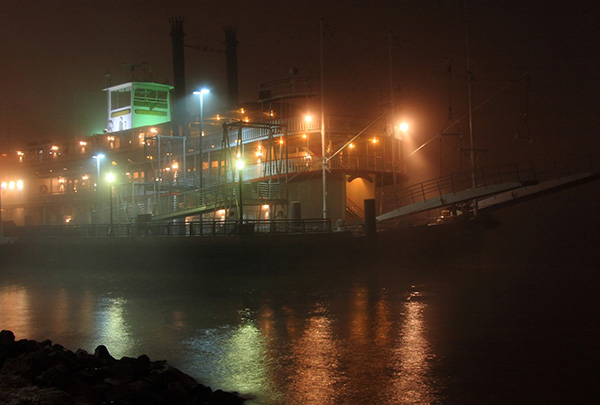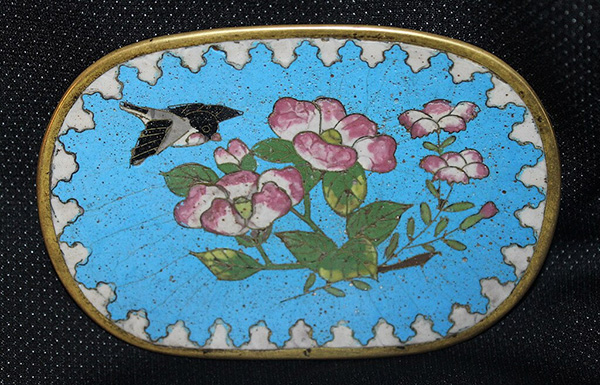The inimitable Stephen Sondheim said it very well in his musical Sunday in the Park with George. As actors roam through an art gallery setting, they sing “Putting it Together.” The lyrics describe the effort it takes to create a work of art. Not easy, they tell us. Minor details require major decisions. It’s great to have a vision of the finished product, but yes, it all depends on execution.
Sondheim’s work is about the painter Georges Seurat. But the words of the song hold true for any work of art, whether it’s sculpture, a symphony, opera, musical theater—or writing a novel.
Artists put the raw story on the page, in the computer, on the canvas. They take a chisel to stone or play the notes until the song takes shape. Then they revise and refine. Artists reuse a canvas, add or subtract an image. Composers tinker with a melody, changing the notes or the key. Actors hone their lines and staging. And dancers leap into space.
So it is with writers. An idea takes shape and evolves from a paragraph to a scene to a book. Characters come and go and often do things the writer didn’t expect. Sometimes a character who is meant to be a walk-on grabs a larger role in the plot. A setting changes, a plot takes an unexpected turn, and suddenly what was moribund takes flight.
It’s different for every writer. Let us tell you how we do it.

Yikes! Writing is a Process?
D. Z. Church
Let me first say, in the world of writers, I am what is known as a pantser. Which means, I write the first draft by the seat of my pants. Well, sort of. Once I know the basic premise, I start researching like mad.
For example, I am in the midst of writing the fifth Cora Countryman or Wanee Mystery, currently titled The Orleans Lady. But before I applied my pants to my seat, I spent months learning everything I could about Mississippi Riverboats, design, routes, boiler rooms, decking, and accidents, like that at Neeley’s Landing. I studied maps, routes and tales of the river during the 1870s from Clinton, IA, to Louisiana, MO, with emphasis on the islands in the big bend below Hannibal, MO. I researched gambling and entertainment on the river and discovered that Civil War gunboats were pressed into service as floating bordellos.
While looking for seedy historical figures to be aboard The Lady, I followed a trail. It resulted in me having a heyday researching the development of the Chicago-style gang (mob, really), and as much as I could about the man behind it, resulting in a wonderful discovery that finalized the plot. And there was a whole trip down the rabbit hole re: Queen Victoria’s children and others of note who might travel down the river in 1877.
With the research stuffed in my head and a hand-drawn picture of The Orleans Lady propped by my computer, I started the story with Cora and friends in Wanee, setting place and time and circumstance. I knew what emotions I wanted to evoke, which Waneeans would board the boat in Clinton, IA and what would befall them.
One of the things us pantsers run into – always – is that we start slow and gain momentum, so the end of the book is almost always more intense, more descriptive, well, more everything than the beginning. When this particular stress reaches a head, I go back to the beginning, or to the beginning of a thread, and fill in the plot, maybe do a little more research, create better descriptions of some of the characters who took on more important roles as the story progressed, perhaps add a scene or two to foreshadow what is to come or build tension and momentum. That done, I end up back where I was in the draft when I decided I needed to fill in the blanks. Then, I continue writing. Those detours may happen two or more times during the first draft. Which, of course, makes it the second, third, or fourth draft.
Then, when that draft is done, well, I go back and read it again and edit it and maybe fill in some more blanks and pray it doesn’t change things downstream, since I knew all along how I wanted it to end, who did it (well, maybe), and why (well, mostly). Truly, I reckon, the fun in being a pantser is that I get to spend time with my characters as they reveal their story to me.
So, here I am on the Mississippi mid-razzle, but not to the dazzle, near the end of the first draft of The Orleans Lady, and I find I need to circle back to ensure that everything lines up as the finale becomes grand. Until then, I am plugging my way down the Mississippi River toward Louisiana, MO, on a boat full of rapscallions, gamblers and three Waneeans. What could be more fun than that?
I’ll keep you posted on my progress.

Putting it Together
Janet Dawson
I woke up a few days ago with two characters in my head. I didn’t plan on it, but here they are.
Two well-dressed men, one dark and one fair. Their confrontation is polite at first. But under that courteous veneer, they have history, and it’s not good. Emotions surge and anger breaks into verbal conflict. Not physical. Not yet. But that possibility looms.
They’re in a shop, a large dark room full of interesting objects, with a bell that rings every time someone opens the front door. As I listen to the words they are saying, two other characters enter the scene, both women. One comes through that front door, the other from a room at the back of the shop. The women are from different backgrounds. What are they doing here?
What started as a daydream has turned into a plot with characters and setting. What started as me talking to myself is now dialog.
What? You didn’t know that writers talk to themselves? Well, this one does.
I spent a whole day at the computer, capturing that scene in my head and learning about those two men. I’ve made notes about the backstory, figuring out how they got there and why.
That’s how it starts, sometimes. It’s different with every book.
Now, I didn’t mean to start a new book right not. I’m already working on two, a historical novel set in the 1870s and a new Jeri Howard novel. So, add this new project to the six or eight plots already swirling around my writer brain. It’s crowded up there, with all those characters.
But yes, often it starts just like that. A situation, a character, a place. What if? Off I go, to explore where that question takes me.
As my pal D.Z. says, we writers often categorize ourselves as plotters or pantsers. Plotters plot, to the Nth degree. Detailed outlines, that sort of thing. Pantsers? That means writing by the seat of our pants. I think I’m somewhere in between, leaning more toward the pantser side. Sometimes I don’t do the detailed outline until I’m well into the book and trying to figure where to go from there. Otherwise known as lost in the weeds.
Let’s look at the works-in-progress. The historical novel is titled Bloody Lincoln. The book has a protagonist, the daughter of an officer in the frontier army. And lots of characters, both fictional and real historical figures, including Billy the Kid, all dealing with a real event that happened in a real place. That’s the Lincoln County War in New Mexico Territory, circa 1878.
Plus, I must consider the historical record, one that is detailed and for the most part well-documented. I can’t have Billy the Kid doing something over here when the record clearly states he was over there. But sometimes those historical accounts differ, or there are gaps. That’s when I must decide how to proceed, and make it work.
And the research. It’s easy to do the deep dive and get overwhelmed by the amount of information. I have books and articles on everything from the frontier army to forts in New Mexico Territory to what people wore and ate. And how they traveled back then. For example, how long will it take a wagon pulled by two horses to get from Santa Fe to Fort Stanton? And on what trail? Because the interstate and Highway 380 didn’t exist back then.
Now, the latest Jeri Howard novel. The title is Dynamite Dorothy. Because that is such a good title I have to use it. What does it mean? You’ve heard of Rosie the Riveter. Well, during World War II, a woman who worked at the Giant Powder Factory at Point Pinole in the East Bay was called a Dynamite Dorothy. What does this have to do with Jeri Howard? Her grandmother worked as a welder at the Kaiser shipyard in Richmond during the war.
What if? I’m figuring that out. The deep dive into research has begun, looking at the World War II home front in the San Francisco Bay Area and expanding into the postwar years.
In the meantime, I’ve been having fun with those two characters. I have a backstory now and a pretty good first chapter. Which is not bad for what started as a daydream.
